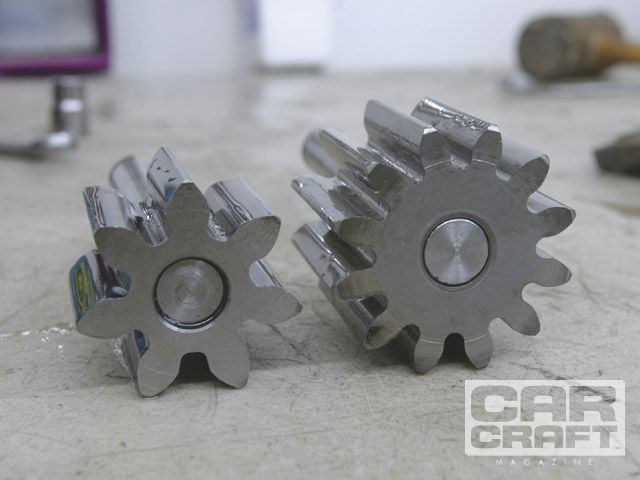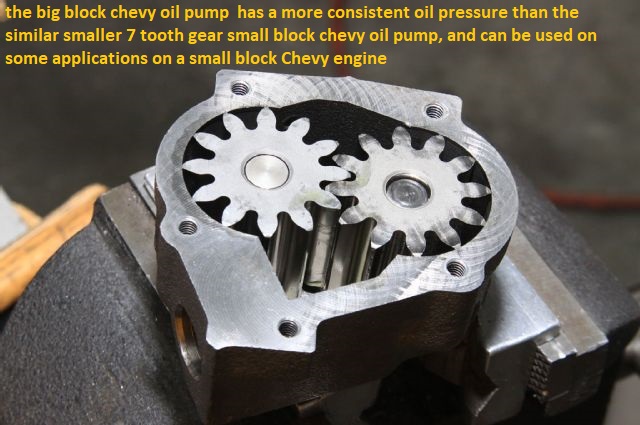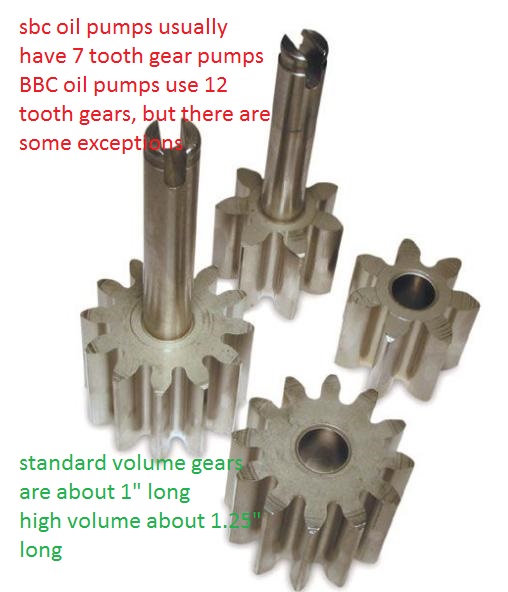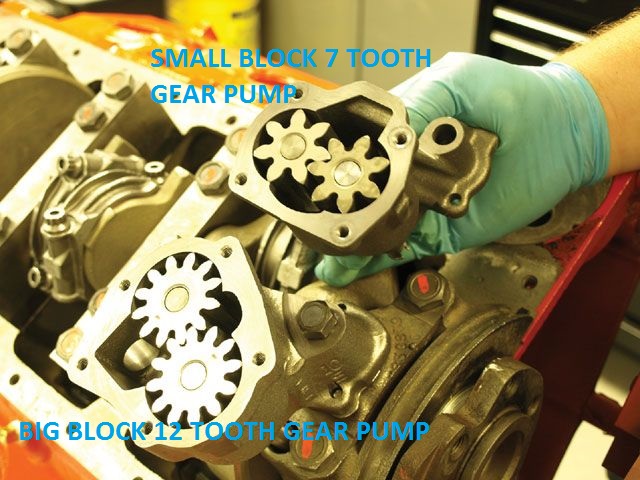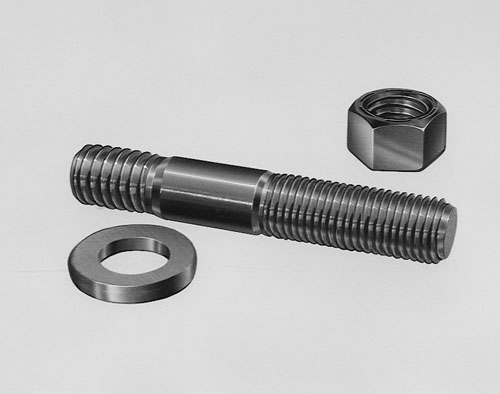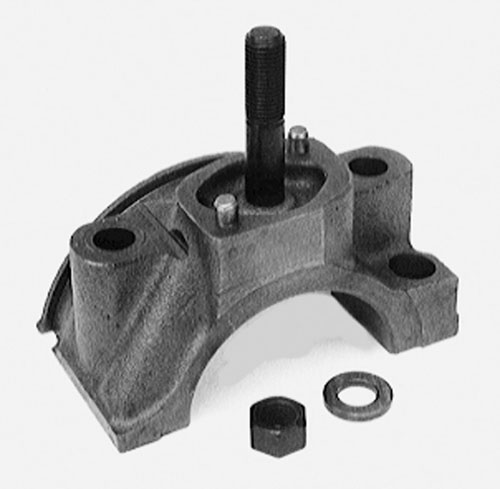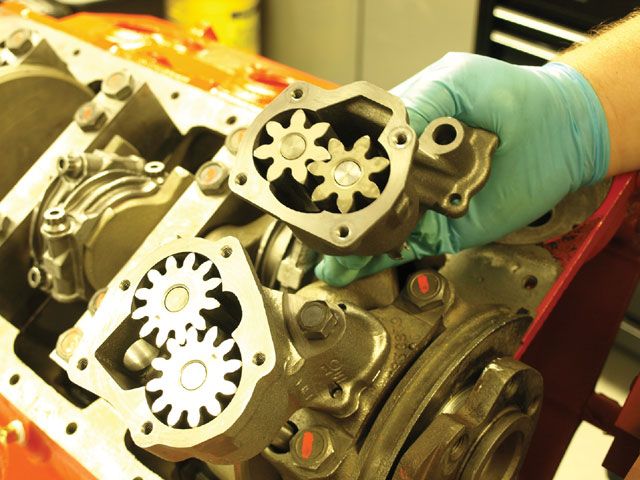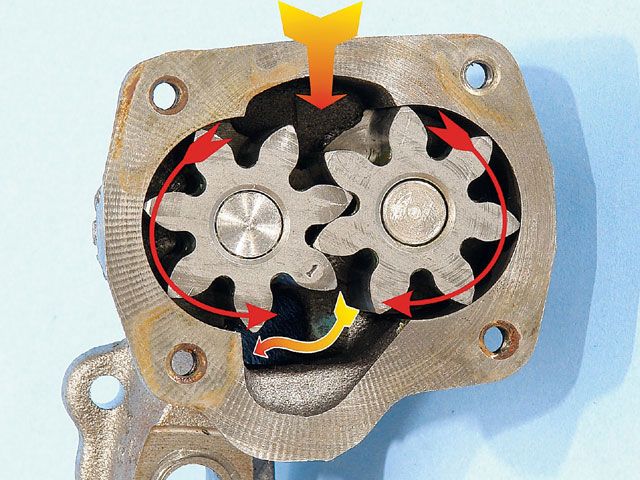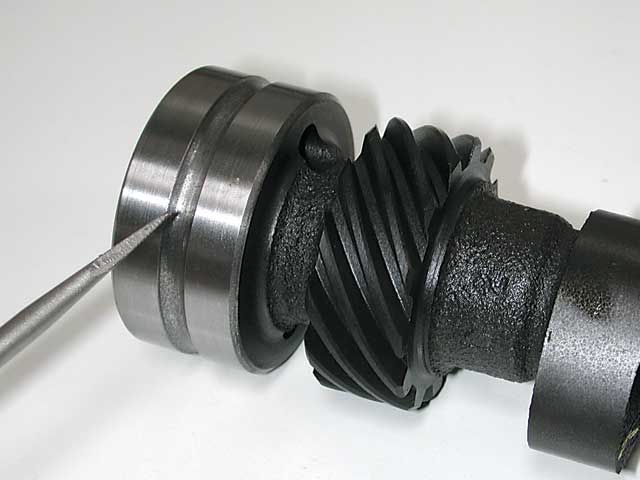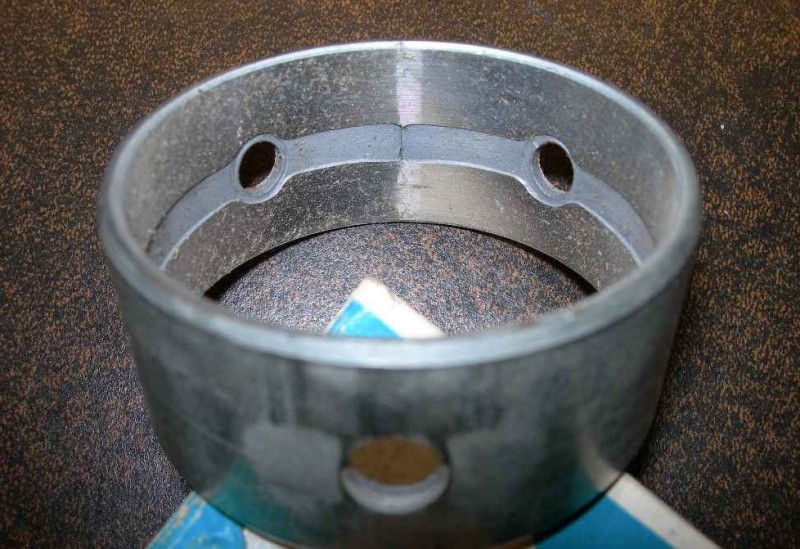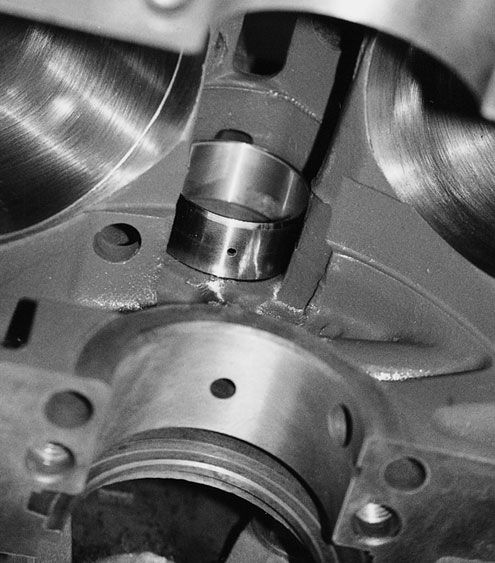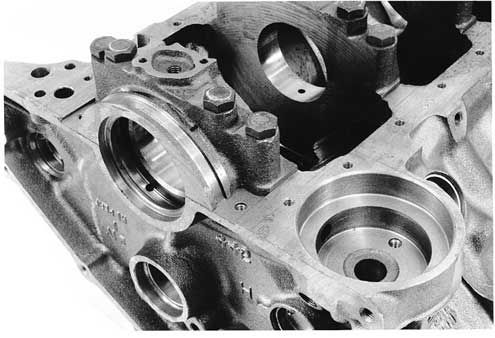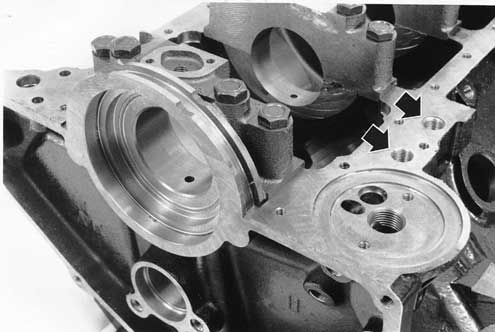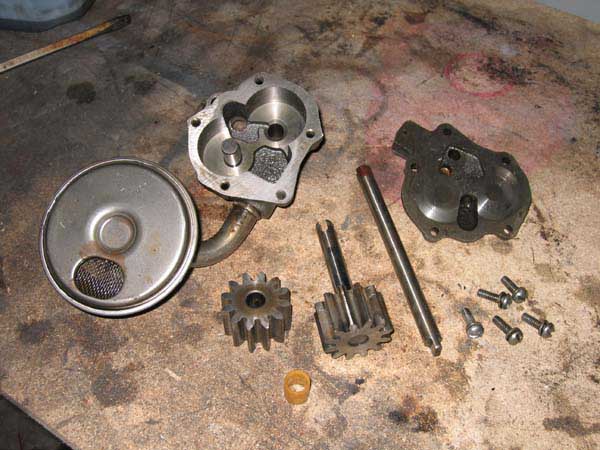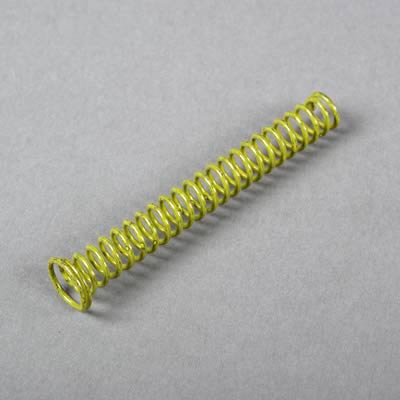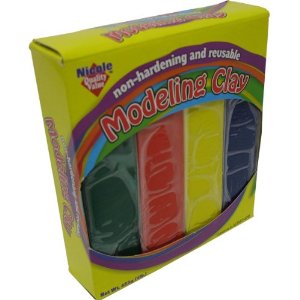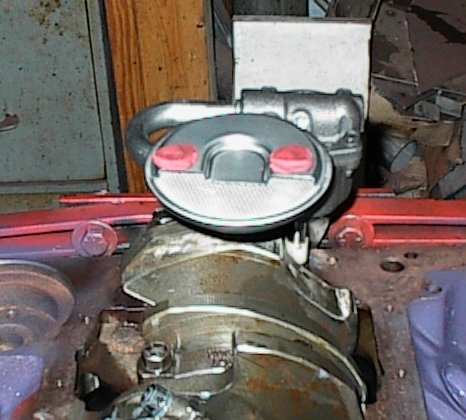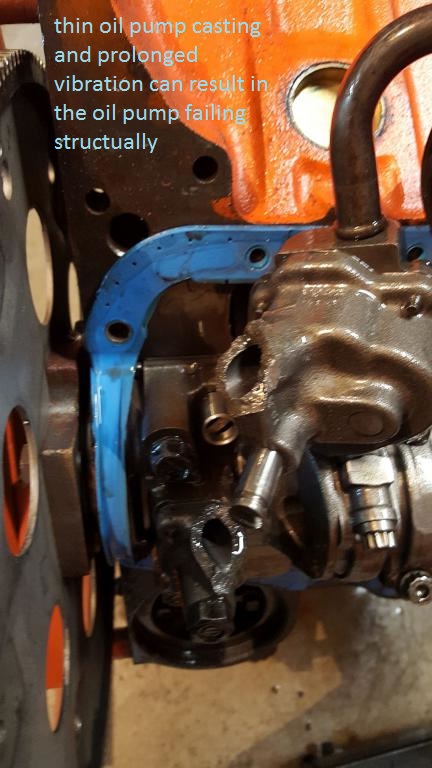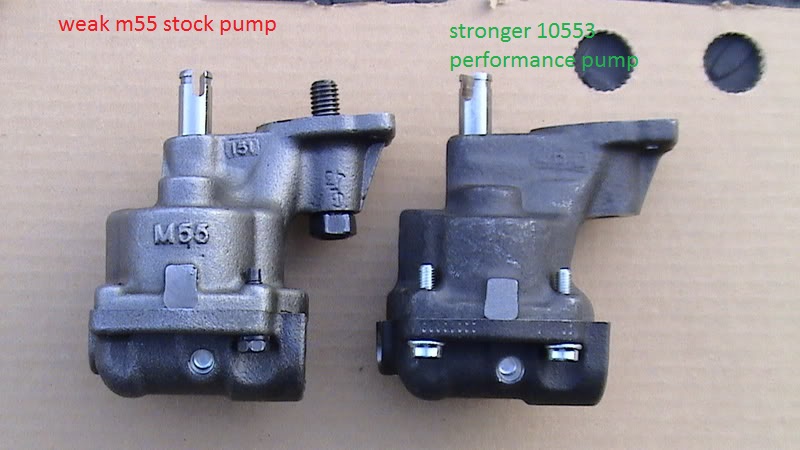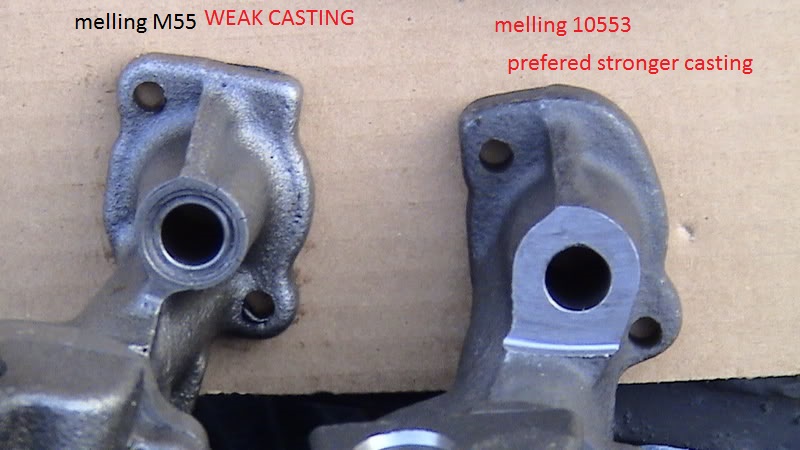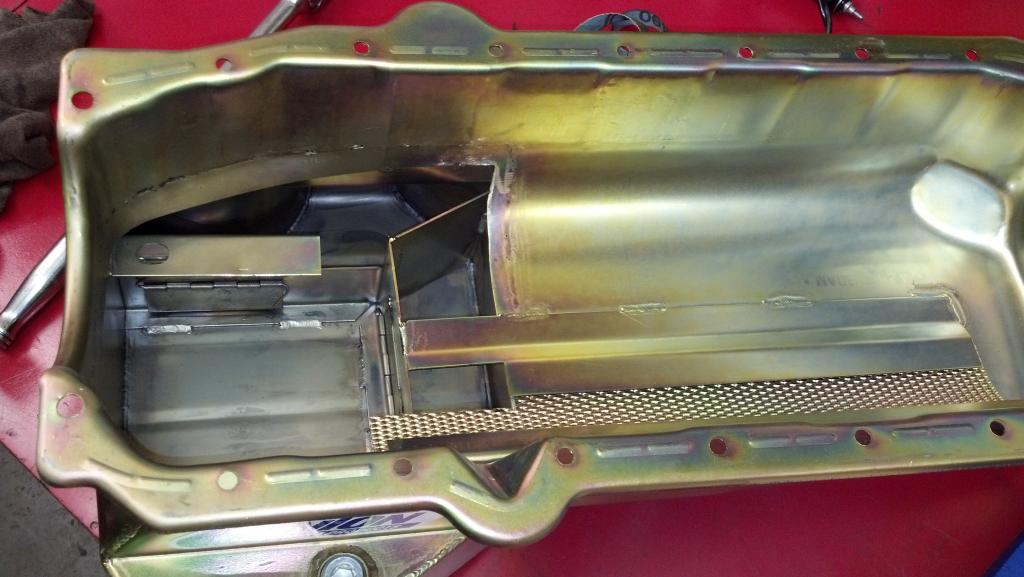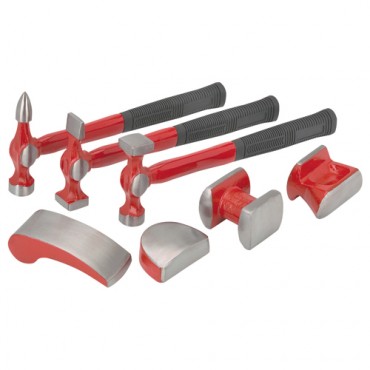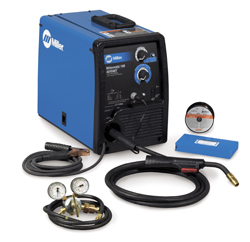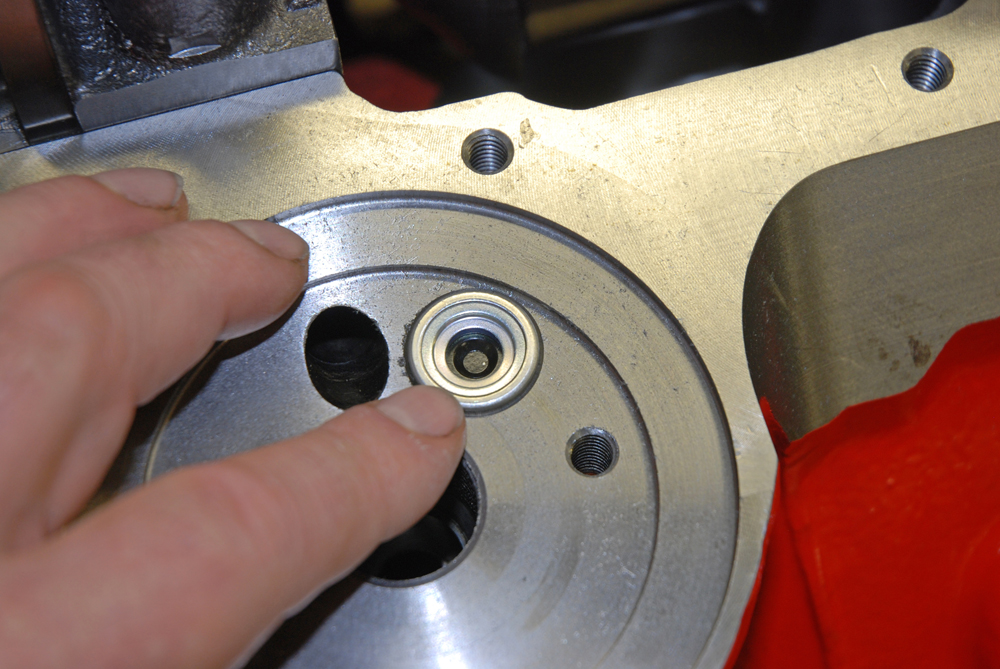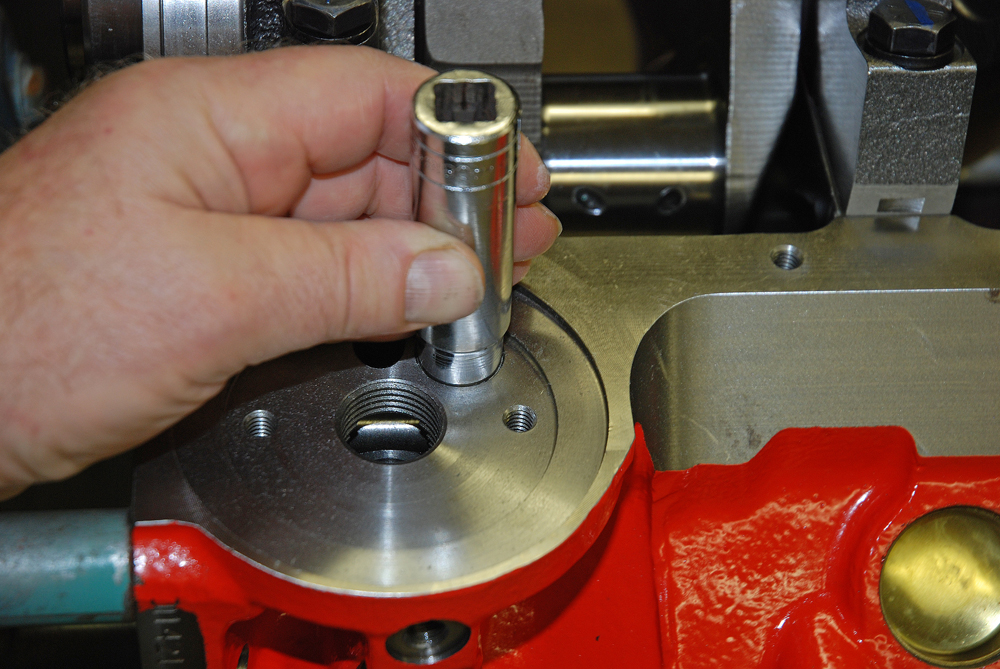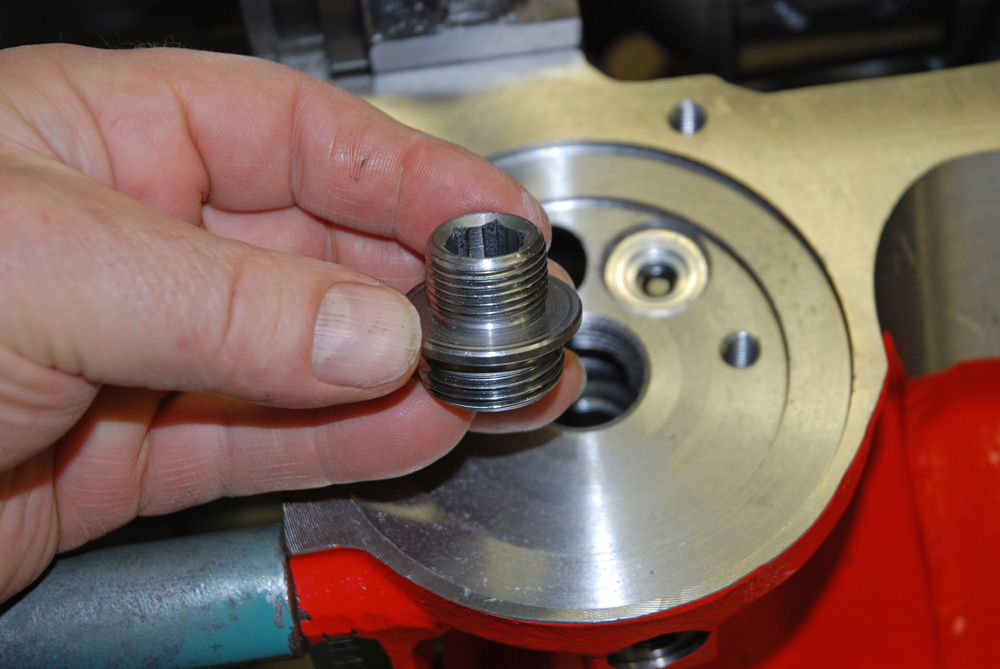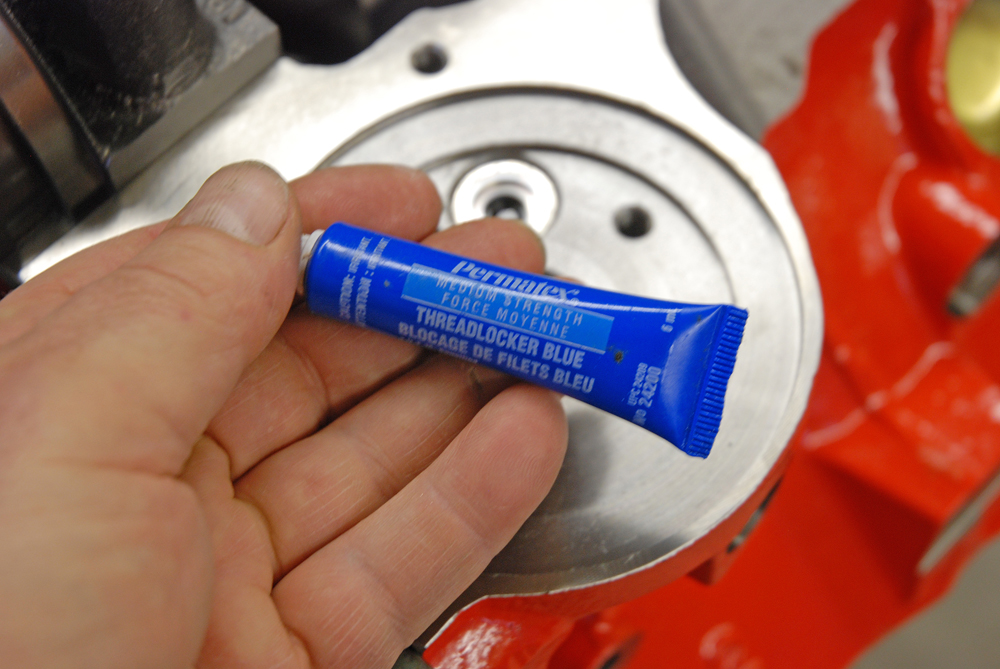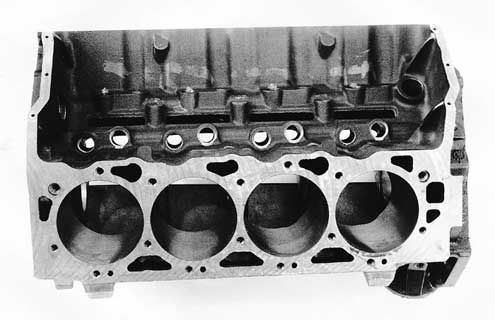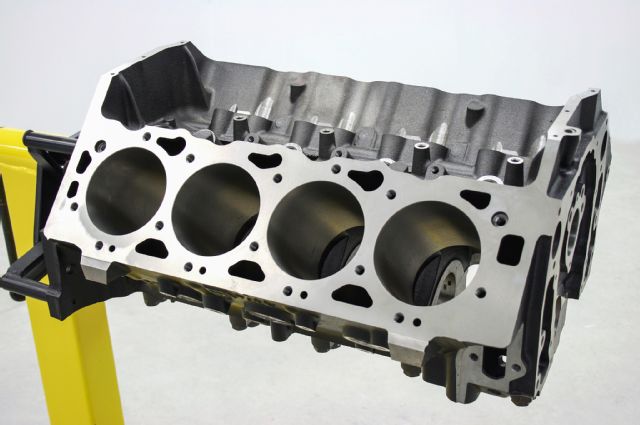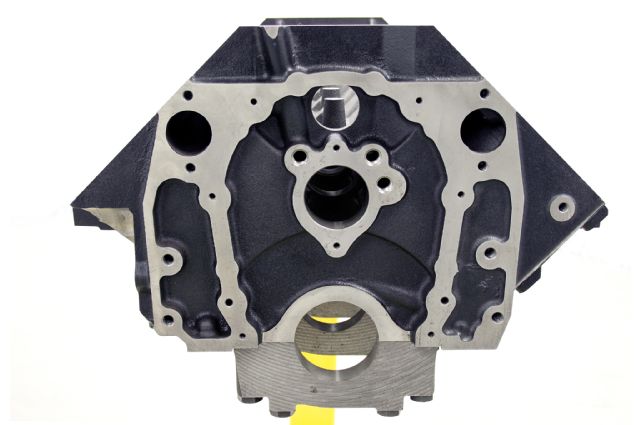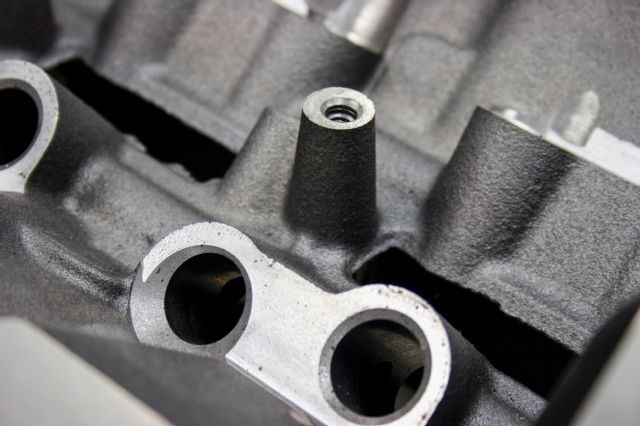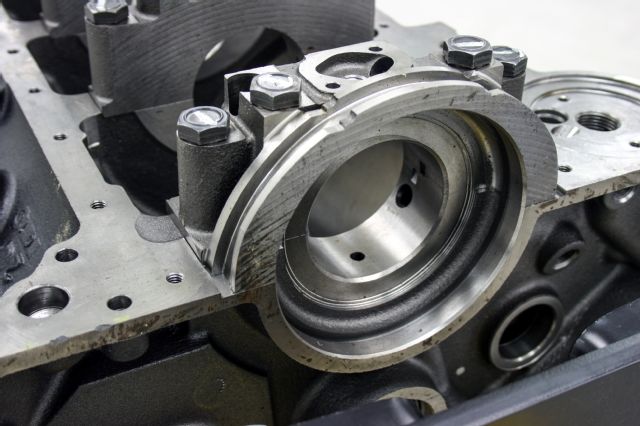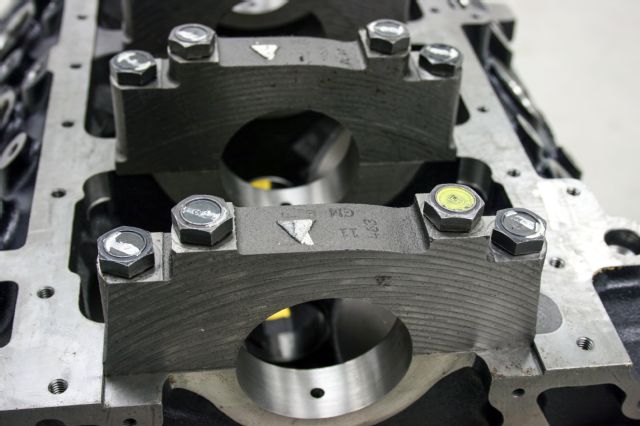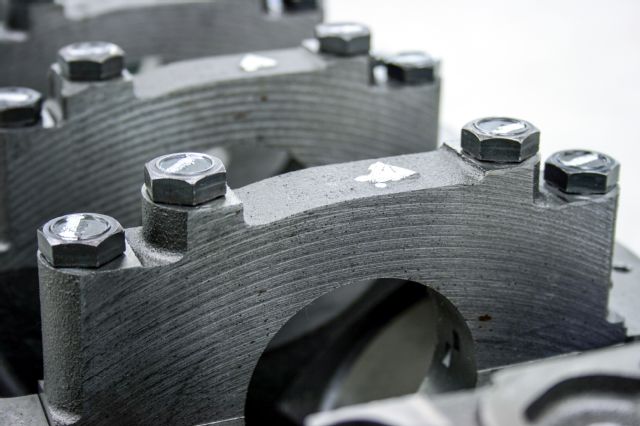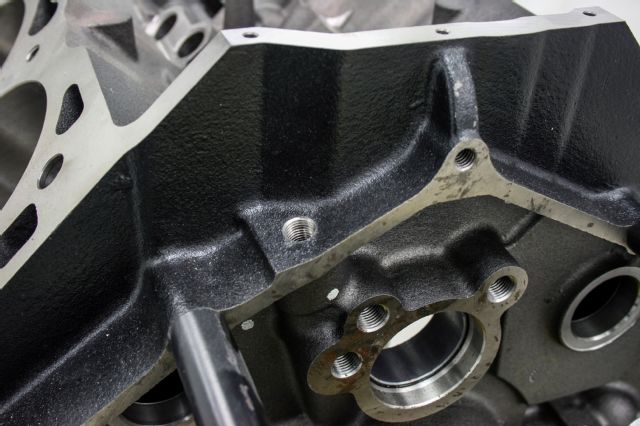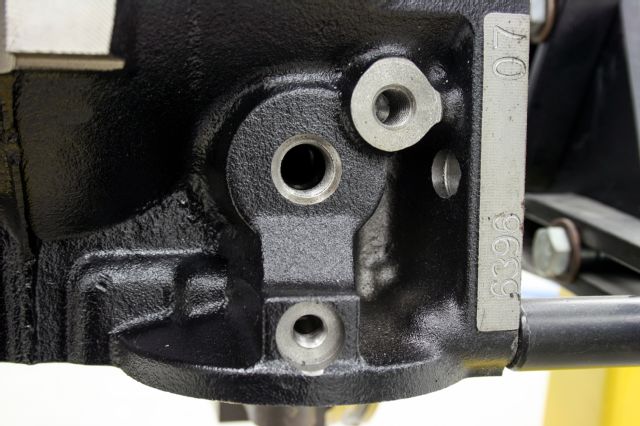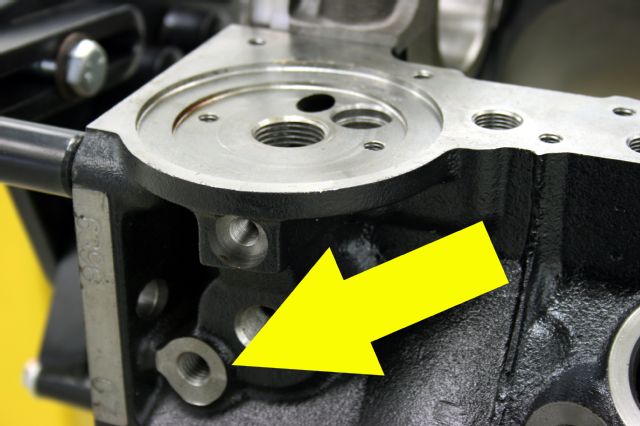WOLFPLACE POSTED THIS
These debates crack me up,,,,
Do any of the "pump the pan dry crowd" ever stop & give some thought to how an oil system works?
When does a hi volume pump deliver more oil assuming all clearances (leaks) are unchanged & you are at saturation with a stock pump?
Once you are at saturation or on the relief assuming the relief passage is
adequate,,,
What controls the oil flow?
The pump?
Or the leaks in the system?
If the leaks do not change how does a hi volume pump pass more oil except through the relief system?
If the pressure stays the same say 70lbs at the gauge at max
Which pump is using more HP to drive?
Said another way,,
Does it take more HP to push unneeded oil through the relief at the same delivery pressure?
I don't think so
Is a hi volume pump necessary in most cases?
No it is not
Will it hurt anything?
In most cases no it will not
If low pressure at less than relief setpoint makes you nervous
The hi volume pump is for you
The only time you are going to start with less oil in the pan is at any point below the relief pressure simply because below this the hi volume pump will in fact pass more oil through all the leaks
Why?>> well because at this point the standard pump has not reached it's full potential as shown by a lower pressure.
If the leaks are not the bearings but the upper end supply then the pan will indeed start life at a lower level under these circumstances
This could potentially cause an issue if you do not have good returns.
Bottom line
I use a hi volume pump in many engines not because they are necessary but because many people just do not realize you don't need 100lbs of pressure at 2000 RPM,,, you are usually fine with 20lbs
But it looks nasty on a 100lb gauge so,,,, we have the hi volume band-aid applied & everyone is happy
There are exceptions notably roller lifters. I don't like low oil pressure with them it tells me there is a good chance you could be starving them of needed volume & flow.
Here a hi volume pump is a good thing in a street or endurance application where you have to run the engine at lower RPM.
Remember the pressure you see on a gauge is nothing but the resistance to flow or delivery pressure
It has little to do with protecting your bearings or much else for that matter except as noted above
That's my 3.5 cents for today
found this write up for gen v iv:
Oil Cooler Plumbing
Located along the oil pan rail just ahead of the oil filter pad are two drilled and tapped (3/8” NPT) oil passages for routing oil to an external oil cooler. The hole located closest to the oil filter pad (#2) is for the outgoing supply line to the oil cooler. The front passage (#1), which is farthest from the filter pad, is the return line from the oil cooler.
Careful examination reveals that these two passages intersect the same return line that feeds oil back to the main oil tunnel. This requires that a special fitting be used in the #2 supply line to prevent oil from short circuiting the oil cooler.
Part number SD1540 provides the necessary diverter basket to prevent the supply oil from entering the return line before going to the oil cooler. This fitting has a dash 10AN thread to allow the use of aftermarket components to plumb your external oil cooler. The front passage #1 will require a 3/8” NPT by dash 10AN adapter (#FCM2185), which is available from Scoggin-Dickey.
Understanding By-pass Valve Locations
Factory assembled 454, 502 engines and short blocks have two by-pass valves installed in the block. These factory installed by-pass valves (#25013759) will open at an 11 psi pressure differential. One by-pass valve is installed in the center hole on the oil filter pad (#4). This hole is the oil return passage from the oil filter. The second by-pass valve is installed in the adjacent hole (#3). The egg shaped hole (#5) is the high pressure oil supply passage from the oil pump.
For all racing application that will NOT use an oil cooler but will maintain the stock oil filter location, you must remove the center by-pass valve in location #4. Removing this valve eliminates three redundant right runs in the oil system. However, if you leave this by-pass in place the oil system will still function as it was intended, but a loss of oil pressure can result from the four right angle turns required for oil to return to the main oil tunnel.
If you intend to use a remote oil filter, a high pressure by-pass valve part number 25161284 must be installed in position #3. This valve will open at a 30 psi pressure differential. A plug will be installed in position #4 to prevent oil flow thru this passage. Oil should be returned to the block in the 3/8” hole located just able the oil filter pad. An oil filter block off plate kit (#SD3891) can be purchased from Scoggin-Dickey for Gen V and VI blocks to plumb your external oil filter.
(keep in mind that ALL '91 and later Gen.V and Gen.VI big blocks come with 4-bolt main caps. The two-bolt big blocks are no longer in production
MANY BUT NOT ALL aftermarket head designs have been modified to work on both the early MARK IV 1965-90 and later MARK V & VI blocks 1991-later.)
If you intend to maintain the stock filter location and will use the factory provided oil cooler passages to install your oil cooler, then you must install two high pressure by-pass valves (#25161284). One will be installed in location #3 and the second in location #4. Happy oiling
When the Mark IV was installed in production vehicles for the first time in 1965, it carried the Turbo-Jet name on the air cleaner, displaced 396 cubic inches, and was rated at a maximum of 425 horsepower in the Corvettes.
Here’s a quick look at milestones in the big-block’s expanding and contracting history of displacement:
396 cid – introduced in 1965, with 4.094-in. x 3.760-in. bore and stroke (first production Mark IV engine).
427 cid – introduced in 1966, with 4.250-in. x 3.760-in. bore and stroke (aluminum versions used in COPO supercars).
366 cid – introduced in 1968, with 3.935-in. x 3.760-in. bore and stroke (tall-deck; used in truck applications).
402 cid – introduced in 1970, with 4.125-in. x 3.760-in. bore and stroke (advertised as 396 cid).
454 cid – introduced in 1970, with 4.250-in. x 4.000-in. bore and stroke.
502 cid – introduced in 1988, with 4.466-in. x 4.000-in. bore and stroke (Gen V block, originally developed for non-automotive applications; adapted later by Chevrolet Performance).
572 cid – introduced in 2003, with 4.560-in. x 4.375-in. bore and stroke (developed by Chevrolet Performance; no production vehicle applications).
http://www.superchevy.com/how-to/en...-big-block-casting-changes-through-the-years/
Here’s a Look at the Various Chevy Big-Block Casting Changes Through the Years
With LS swaps all the rage these days, it’s easy to forget big-blocks are still alive and thriving. That’s because when it comes to making big power and even bigger torque, building it with a big-block is as easy as goading a smug Mustang driver into embarrassing himself at the stoplight.
Most enthusiasts know the basic big-block cylinder block casting was updated in the 1980s, but fewer know General Motors quietly updated the basic design of the block casting only a few short years ago to give it greater strength, greater performance capability, and make common much of the differences between the early, Mark IV blocks and later, 1980’s-type Gen V castings.
Big-block production engines were introduced, of course, in 1965 and remained in production with few changes for more than 20 years. Those are the Mark IV engines. In the late 1980s a new version arrived, designed primarily for marine and automotive fuel-injection applications. Those updated versions are referred to as the Gen V (and Gen VI) engines.
Distinguishing between Mark IV and Gen V blocks is easy: if it has a mechanical fuel pump mounting pad, it’s a Mark IV. If there’s no fuel pump pad, it’s a Gen V block. There are several other differences—particularly in the water jackets near the deck surfaces—that make some Mark IV and Gen V parts non-interchangeable, including crucial components such as cylinder head gaskets.
Within the last few years, General Motors revised the production-based big-block casting to accommodate features of the Mark IV and Gen V, enabling cylinder head and gasket interchangeability. It also features a mechanical fuel pump pad recast into the architecture. Other, less-visible changes to the basic casting include revised oiling to allow for larger camshaft bearings, thus higher camshaft lift. There has also been talk of creating extra clearance for roller timing chains, but as of our press deadline, that change hadn’t been implemented.
The latest block design is available from Chevrolet Performance (
chevrolet.com/performance) under part numbers 19170538 and 19170540. The “0538” version comes with 4.250-inch finished bores to support 427- and 454-cubic-inch engines, while the “0540” block has larger-diameter 4.470 bores to build a 502-inch engine. Each can be overbored for a larger displacement, with the 0540 block supporting up to 4.500-inch bores. Notably, all of Chevrolet Performance’s crate engines use the revised casting design.
If you’re looking to build a mountain motor with an even larger bore, you’ll have to look at Chevrolet Performance’s Bowtie blocks, which support up to a 4.600-inch bore, or an aftermarket block.
For strength and parts interchangeability, the big-block castings’ specific changes and updates include a slightly beefier main web on the 0538 block, while both versions have revised water jackets near the deck surfaces, allowing Mark IV or Gen V head gaskets to be used interchangeably. The front bulkhead is revised, too. It is thicker and stronger, with marked provisions for a 10-bolt timing cover. Actually, the bulkhead is drilled and tapped for a conventional six-bolt cover, while the remaining holes must be finished by drilling out the prescribed positions. There is more material around the lifter bosses and a revised rear-of-block section allows for the machining of one- or two-piece main seals (similar to the Gen V design).
Oil pressure feed holes were added to the oil filter boss and front bulkhead to support oil feeds for superchargers, turbochargers, etc., while the oil hole next to the camshaft bore (at the front of the block) was repositioned to enable safe machining of the cam bore to accept a 50mm roller camshaft bearing. A new boss was added next to the distributor hole in the valley to support hardware for digital ignition equipment, and a front clutch boss has been added for older vehicle applications.
Also, a pair of new core plugs was added to the rear bulkhead. Chevrolet Performance says they enhanced the manufacturing process at the foundry and help improve overall quality. Also, a “Bowtie” emblem and other identifying marks were added to the Bowtie block, distinguishing it from previous castings.
In addition to the production-based “Mark”-type casting, Chevrolet Performance’s Bowtie block castings are designed for the highest-performance applications. They feature a few minor differences when compared with the Mark block, but include the common core’s updates for greater interchangeability. Most notably, the Bowtie blocks are machined for splayed main bearing cap bolts, whereas the “standard” versions feature production-style parallel main cap fasteners. The Bowtie blocks also have a distinctive water jacket design that allows the 4.600-inch bore capacity. There are seven part numbers offered for Bowtie blocks, some with the standard 9.800-inch deck height and one-piece rear main seal, and others with a tall, 10.200-inch deck height and two-piece rear main seal design.
There you have it: The big-block is renewed and improved after more than 50 years of stalwart performance. The updates will keep big-block engines viable for the foreseeable future and continue to prove the adage that there’s simply no replacement for displacement.
The latest big-block casting has undergone significant updates to align the differences that distinguished earlier Mark IV and later Gen V blocks, while also strengthening the block and adding provisions that support greater performance.
The most noticeable visual change to the latest design is the reintroduction of a mechanical fuel pump mounting pad machined into the passenger-side front corner of the block. Gen V blocks did not have this provision.
The front of the block was revamped for greater parts interchangeability with the Mark IV and Gen V, including using 6-bolt or 10-bolt timing chain covers. (It comes with the 6-bolt cover holes machined, but is easily drilled and tapped for the 10-bolt cover.) Also, a Bowtie-style auxiliary pressurized oil line hole is machined near the bottom of the China wall.
A revised oiling design (the oil hole next to the cam bore was repositioned) allows the camshaft bore to support the 50mm bearing of a roller-style, high-lift camshaft.
The valley is mostly unchanged, but is machined for a roller-type valvetrain with more material cast around the lifter bosses. Also, a bolt boss is added next to the distributor boss to support digital ignition systems.
Deck height specs remain unchanged at 9.800 inches for production-based blocks, but the water jackets beneath them are revised so that early Mark IV-type and later, Gen V-type head gaskets can be used interchangeably. Some versions of the Bowtie block are offered with a 10.200-inch deck height.
The rear of the block casting is updated with a common core that enables the machining of one-piece or two-piece rear seals. This permits the engine to be fitted with and dressed like an early Mark IV engine, albeit with the modern block casting.
There are subtle changes to the interior bulkheads that incorporate the Bowtie design into 8.2L Mark blocks; the smaller-displacement 7.4L Mark block is unchanged, due to knock sensor accommodations. There are subtle machining updates, too.
All Mark-type blocks—such as the one seen here—are manufactured with production-style parallel four-bolt main caps. The race-oriented Bowtie casting features splayed mains.
The rear of the block features new plug holes, similar to what GM did with the small-block casting.
A new hole (shown at the very bottom of the photo) is added to the oil filter boss on the block to support a pressurized oil feed.
Another major addition to the big-block casting is a clutch equalizer boss that makes the block a better fit for vintage muscle cars and their four-speed transmissions.


